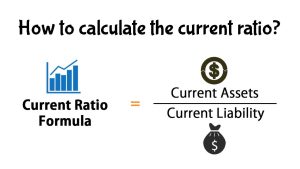Advantages and Limitation of Fixed Asset Turnover Ratio – Fixed Asset Turnover Ratio is a ratio that shows how efficiently a company has used fixed assets to achieve sales.
It compares net sales to fixed assets to calculate company ROI in plants, buildings, machinery, as well as other fixed assets.
The formula.
Fixed Asset Turnover Ratio = Net sales/Fixed asset – Accumulated depreciation
In this case, sales are taken on a yearly basis, and average fixed assets are determined by dividing the opening balance of fixed assets and the closing balance of fixed assets by two.

Advantages of Fixed Asset Turnover Ratio
- Suitable for the manufacturing Sector – The majority of investments are invested in the manufacturing sector. Manufacturing companies invest heavily in warehouses, facilities, and other fixed assets. Manufacturing firms benefit from a higher fixed asset turnover ratio, which provides a different perspective on assessing the return on assets in relation to top-line expansion. The high turnover ratio means that fixed assets are producing a high volume of revenue in a reliable and profitable manner.
- Investors can easily compare this ratio year after year because it reflects the performance increase or decrease of fixed assets. It also assists them in determining whether to spend fixed assets in order to meet development targets.
- Aids in asset sale and investment planning. Once the fixed assets turnover ratio has unexpectedly fallen, it indicates the fixed assets to the activities have become redundant and must be sold. As compared to other businesses of the same industry, it is often determined when new factories, machinery, and plants can be purchased.
Limitation of Fixed Asset Turnover Ratio
- Limitations of the Industry: It is mostly useful for contrasting firms through industrial issues. Fixed assets turnover ratio cannot be used in asset-light sectors, such as those that rely heavily on technology.
- Profit is not considered: The fixed assets turnover ratio simply calculates the association among fixed assets and net profits, not really the source of what influenced the numbers. A decrease in asset turnover ratio will send management on a fruitless chase for redundant assets, when in fact, revenue has declined for unrelated reasons. Because of this disadvantage, the fixed assets turnover ratio can be compared to a range of benefit and revenue ratios.
- Accounting Policies Differ: Two firms in the very same sector or in a different sector may have separate accounting rules on depreciation practices. This skews the findings of the industry-wide comparison of fixed asset turnover ratio. Owing to variations in depreciation accounting policies, two businesses with identical asset models and revenue can have varying fixed assets turnover ratios. As a result, this ratio suffers from executive independence in applying accounting policies to sales and fixed assets.
- Alteration of Performance: The Fixed Assets turnover ratio is useful in performing companies with high-value acquisitions in assets, in which the board of directors wants to determine the quality of these fixed assets in comparison to the business’s turnover. Even so, the fixed asset turnover ratio struggles from a significant drawback in its usage as a performance assessing yardstock because it allows managers to continue utilizing the old asset without accounting for the substitution costs of a fresh one.
- To really benefit from the fixed assets turnover ratio, one may compare profit ratios with it in an attempt to get a bigger picture.





